Humans have been drawn to stargazing since the dawn of time. That is maybe why, despite all of our evolutionary and revolutionary advancements, we are reminded of our early ancestral tendencies anytime we see a serene night sky full of stars that shine like diamonds and on which we could look for hours. Humans are known to be inquisitive animals. That is why Gene Cernan, the eleventh man to walk on the moon, once said.
“Curiosity is the essence of human existence and exploration has been part of humankind for a long time. The exploration of space, like the exploration of life, if you will, is a risk. We’ve got to be willing to take it.”
As time passed, they were dissatisfied with the splendor of the night sky. They’re curious to investigate more. What are these glittering objects in the sky that have turned the night sky into a work of art? Is there more to these exquisite objects than meets the eye? From early star charts to modern interplanetary colonization programs, this voracious curiosity has been the driving force. Let’s take a look at one of the most important innovations in the history of astronomy and space observations.
The telescope! It is the most significant and foundational instrument that enables humans to gain at least a smidgeon of insight about this immense cosmos even before setting foot in space.
The telescope has come a long way due to various technological advancements. Telescopes have pioneered the discovery of wonders and mysteries in our never-ending cosmos. From a device that can magnify objects three times to a telescope that can detect infrared rays, astronomy requires telescopes regardless of the technological breakthroughs. Without further ado, here is the history of the telescope and how technological advancements have shaped it into what we see today.
Some theories concerning the invention of the telescope are controversial. However, it was Dutch inventor Hans Lippershey who was the first to patent the telescope in 1608. “Kijker” is the name of his telescope, which means “looker.” The structure is pretty concise: a concave eyepiece was positioned with a convex objective lens.
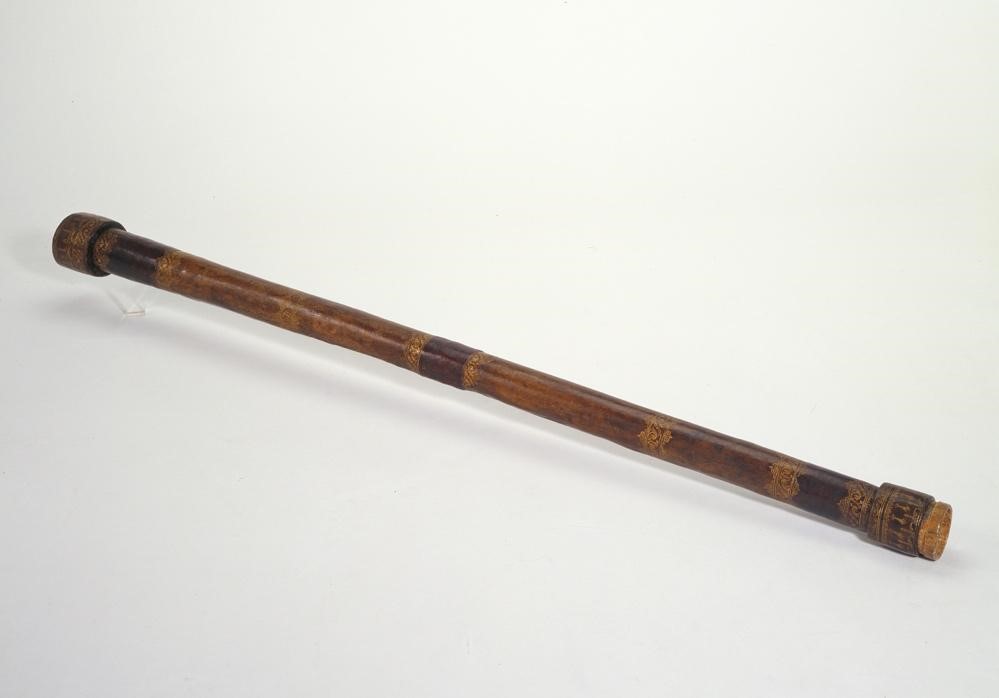
(Image credit: https://commons.wikimedia.org/wiki/File:Kommandostav_kikare,1610-1632–Livrustkammaren-_106402.tif)
It was said that Lippershey got the idea after witnessing two youngsters in his shop holding up two lenses that purported to enlarge a distant weather vane. The origins narrative, on the other hand, is still complicated. Some claim that Lippershey borrowed the design from Zacharias Jansen, a local glassmaker.
A few weeks after Lippershey, Jacob Metius, a Dutchman, filed a patent for a telescope. But many historians believe Lippershey and Metius worked separately on their ideas, whereas Jansen is credited with developing the compound microscope.
Jacques Bovedere, a French later saw Lippershey’s telescope. He told Galileo Galilei about the innovation, and Galileo immediately started working on his own. Galileo invented his telescope in 1609. This is significant because, while others had made telescopes before him, he was the first to implement the idea of a telescope for astronomical issues. Galileo’s telescope has a magnification of about twenty times. He spotted cratered surfaces on the moon and characterized our galaxy, the Milky Way, Saturn’s rings, sunspots, and four of Jupiter’s moons with his telescope. He also convinced himself that Copernicus’ Heliocentric paradigm was true.
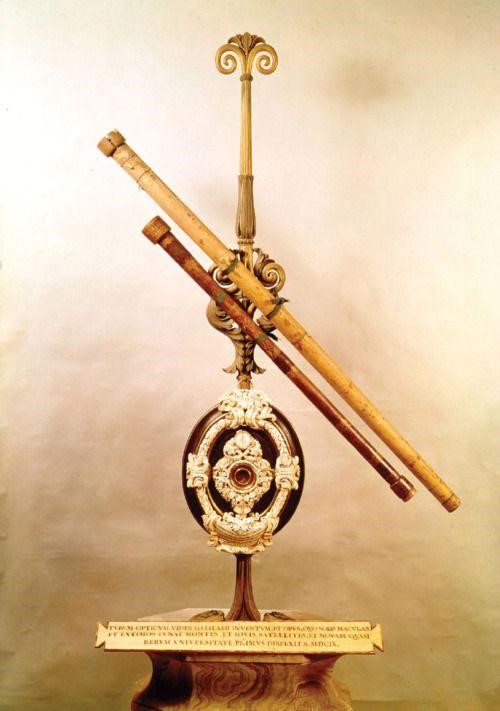
(Image credit: http://gypsyscholarship.blogspot.com/2011/02/john-milton-and-galileo-galilei-curious.html)
In 1611, Johannes Kepler, a well-known scientist, researched telescopic optics and built his KeplerianTelescope. Not only did Kepler build his telescope, but he also studied optics extensively, the outcome of which is the text “AstronomiaParsOptica”. As a result, he is known as the “Founder of Modern Optics.”
Inspired by Galileo’s previous accomplishments, Dutch scientist Christiaan Huygens constructed the most powerful telescope of his time in 1655. He constructed this telescope to conduct a thorough investigation of distant planets and the solar system. With his 12 ft telescope, he could conduct a comprehensive examination of the planet Saturn. Huygens discovered a luminous satellite orbiting Saturn, which he named “Saturni Luna” (Titan, as it is presently known).
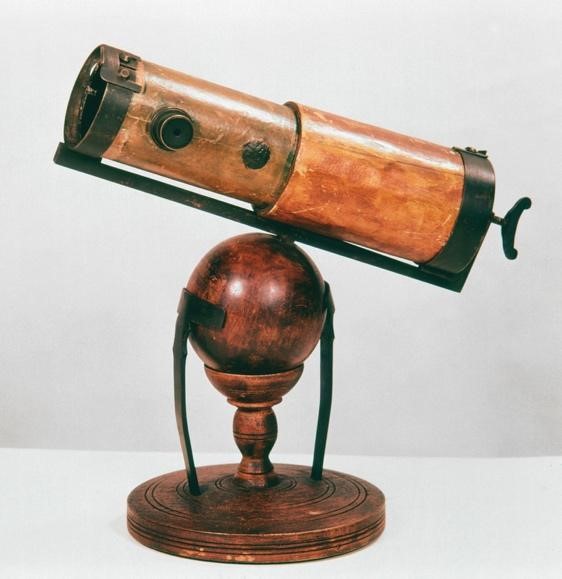
(Image credit: https://collection.sciencemuseumgroup.org.uk/objects/co56834/isaac-newtons-reflecting-telescope-replica-telescope-newtonian-telescope-reflecting-replica)
The discovery of the reflecting telescope is credited to Sir Isaac Newton. He sighted Jupiter’s satellites and Venus’s horns with his fist telescope. In 1671, he built a telescope with a 6 1/3 inch focal length after being inspired by his first feat.
Until 1723, no additional practical improvements to the telescope appear to have been made. It was at this time that John Hadley introduced his reflection telescope, which is a Newtonian extension with a metallic speculum of 6 inches aperture and 62 5/8 inches focal length, and an eyepiece magnifying up to 230 diameters.
Light dispersion was varied when refracted through different kinds of glass, according to English optician John Dollond, who discovered this in 1755. Using this as a starting point, he designed object glasses with two lenses of such structure and refracting power that one would correct the error of the other. This discovery significantly reduced the difficulties that had stymied development in the usage of refracting telescopes for the previous 150 years.
William Herschel finished his 4 ft aperture and 40 ft focal length reflector in 1789. This massive telescope was the world’s biggest at the time, and it would have been a sight to behold. Herschel fixed a problem with the speculummetal used in Newtonian telescopes, which had low reflecting quality. He accomplished this by simply removing the diagonal mirror and adjusting the primary mirror to allow the user to view the scene directly. The Herscheliantelescope was born as a result of this. Herschel used his telescopes to find various natural satellites around the gas giants, including Titania and Oberon of Uranus, as well as Uranus itself. Herschel was also able to locate Saturn’s sixth and seventh moons, Enceladus and Mimas, using his enormous telescope.
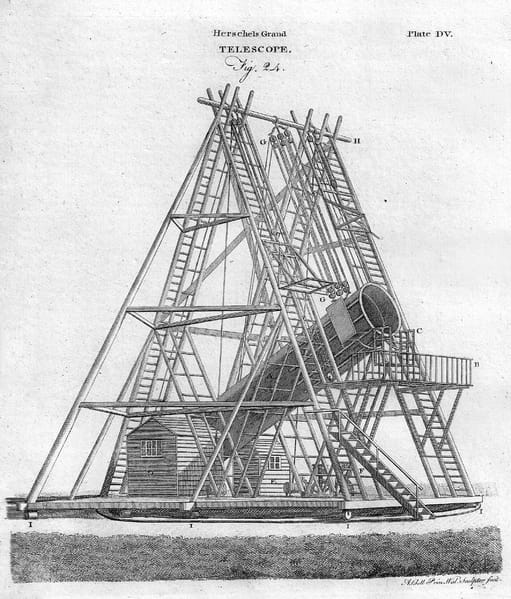
(Image credit: https://en.wikipedia.org/wiki/File:40_foot_telescope_120_cm_48_inch_reflecting_telescope_William_Herschel.png)
It is simple for contemporary technologies to create enormous mirrors for telescopes, some of which are over 29 ft (9 m) long. However, in the 1800s, it was a far more difficult task. William Parsons, the Third Earl of Rosse, successfully overcame this challenge by designing and building a telescope at his residence at Birr Castle in Ireland between 1844 and 1846. Lord Rosse created a ring of five metal mirrors, each measuring six ft (1.8 m) in diameter and weighing more than four tons. Speculum, a heavy and more temperamental copper-tin alloy invented by Isaac Newton, was used to make mirrors. The “LeviathanofParsonstown,” as the reflecting telescope was known, featured a tube that was 49 ft (15 m) long and was hung between enormous stone walls. It resembles a fortress rather than a scientific instrument. Parsons became the first to observe the spiral arms of the M51 nebula using the telescope.
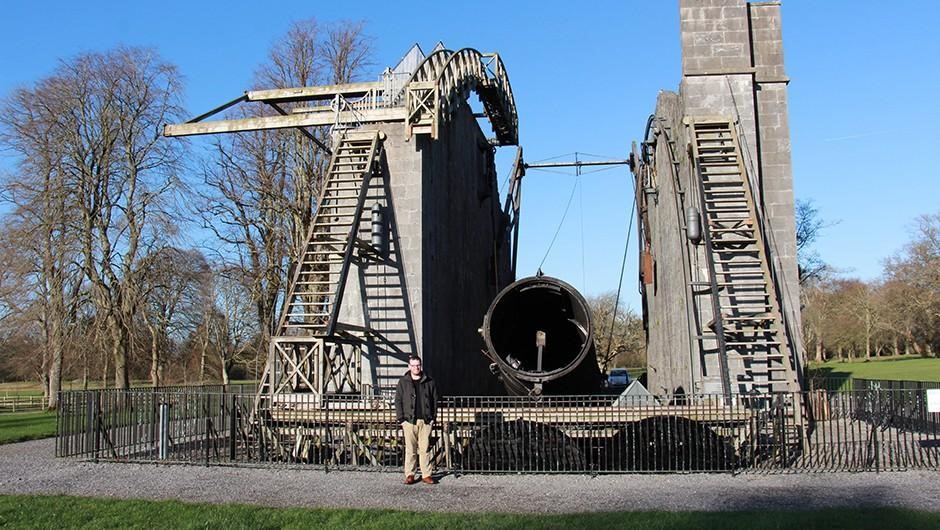
(Image credit: https://www.sheffield.ac.uk/materials/people/academic-staff/iain-todd)
George Ellery Hale founded the Yerkes Observatory at Williams Bay, Wisconsin. In 1897, it would become the biggest refracting telescope in the world. The “birthplace of astrophysics” is said to be this telescope. The telescope has a 3.34 ft (102 cm) wide doublet lens, which is still the biggest of its kind. Many renowned astronomers have utilized the facility in the past, including Edwin Hubble, Subrahmanyan Chandrasekhar, Otto Struve, Gerard Kuiper, and Carl Sagan. The atomic explosion of the star T-Corona Borealis was discovered by this telescope, and it also obtained images of globular star clusters, which aided in the study of stellar motion.
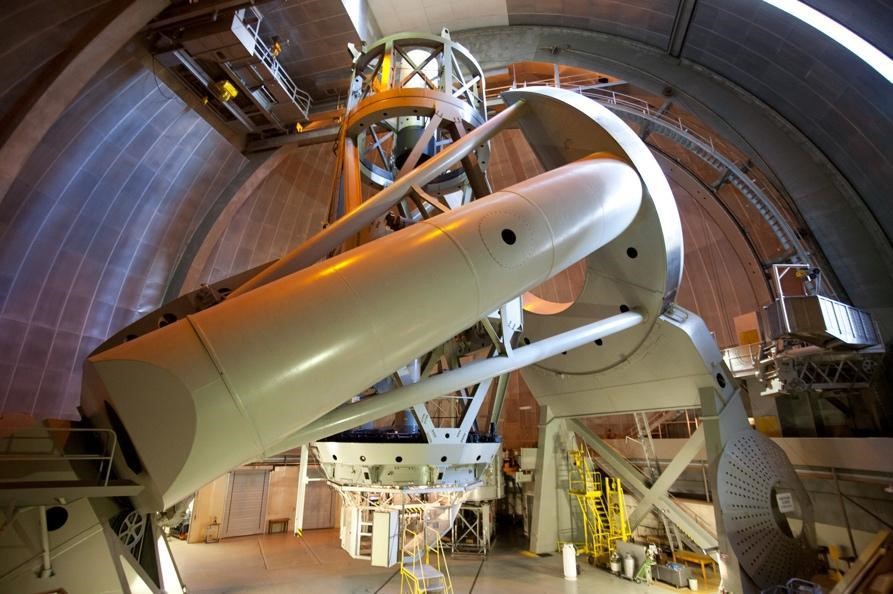
(Image credit: https://sites.astro.caltech.edu/palomar/about/telescopes/hale.html)
Karl Guthe Jansky, a Bell Telephone Laboratories engineer, created the radio telescope in the early 1930s. The entire contraption was mounted on a turntable and could rotate 360 degrees. Jansky’s “merry–go–round,” as it was nicknamed, had a diameter of 98 ft (30 m) and a height of 20 ft (6 m). Grote Reber, an amateur radio enthusiast, was impressed by Jansky’s discovery and went on to create the first apparatus to ‘observe’ radio waves. In 1937, he built the first parabolic “dish” telescope in his back garden in Wheaton, Illinois, with a diameter of 29 ft (9 m). These studies led to the discovery of the Milky Way as the first extraterrestrial radio source.
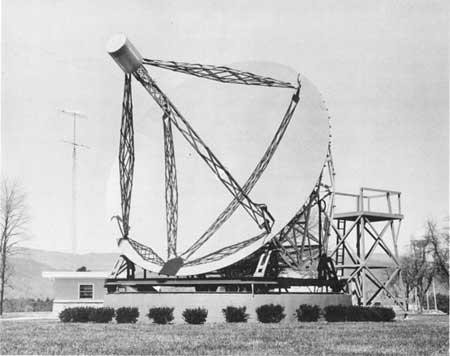
(Image credit: https://public.nrao.edu/)
In the 1950s, British astronomer Sir Bernard Lovell proposed the construction of a huge radio telescope. He realized the tremendous scientific potential of radio telescopes in researching the universe after working on radar during WWII. His dream was to construct a massive 250 ft (76 m) diameter dish radio telescope that could be pointed at any point in the sky. Since then, this famous scientific instrument has played a key part in the study of meteors, quasars, and pulsars.
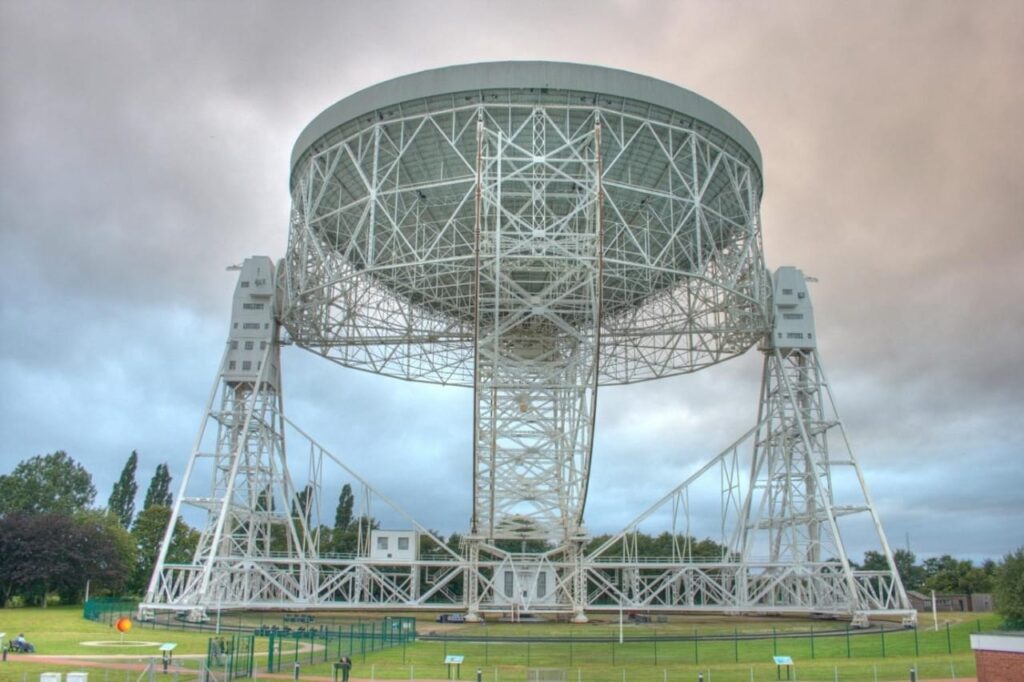
(Image credit: https://meta.wikimedia.org/wiki/User:Mike_Peel)
NASA and the European Space Agency (ESA) collaborated to develop and launch the Hubble Space Telescope in 1990, making it one of the first space telescopes. It has been sent into low-Earth orbit and has participated in several important scientific initiatives. Hubble can give unrivaled views of the stars and planets since it is no longer distorted by the Earth’s atmosphere. A 7.87 ft (2.4 m) mirror and a suite of additional equipment are used to study near UV, visible light, and IR spectra. Hubble may be able to continue to operate far into the 2030s.
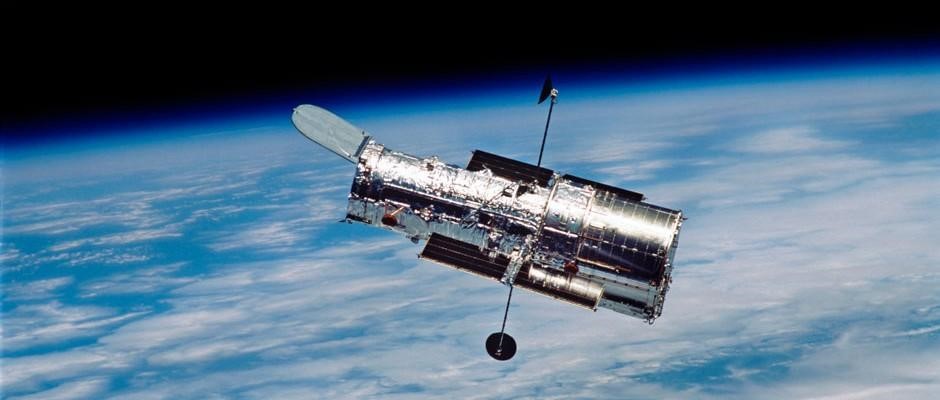
(Image credit: https://www.sciencefocus.com/space/hubble-space-telescope-how-far-can-see/)
These are some of the most significant events and breakthrough discoveries in the telescope’s history. It has been stated that when you’re inquisitive, you’re thirsty for information, thus the best way to satisfy your curiosity is to look for solutions. With advancements in technology, more powerful telescopes will be available, allowing humans to have a greater opportunity in answering and satisfying their curiosity.
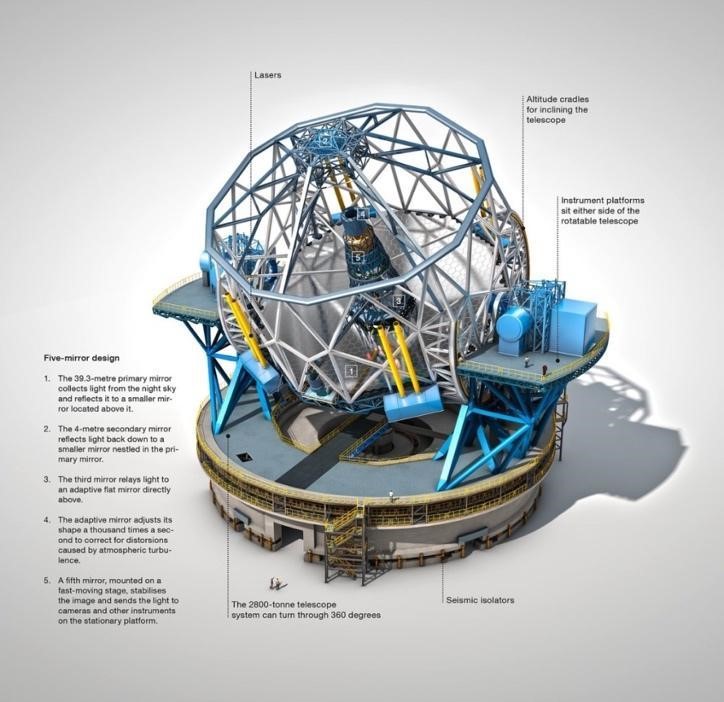
(Image credit: https://www.eso.org/public/images/ann12096a/)
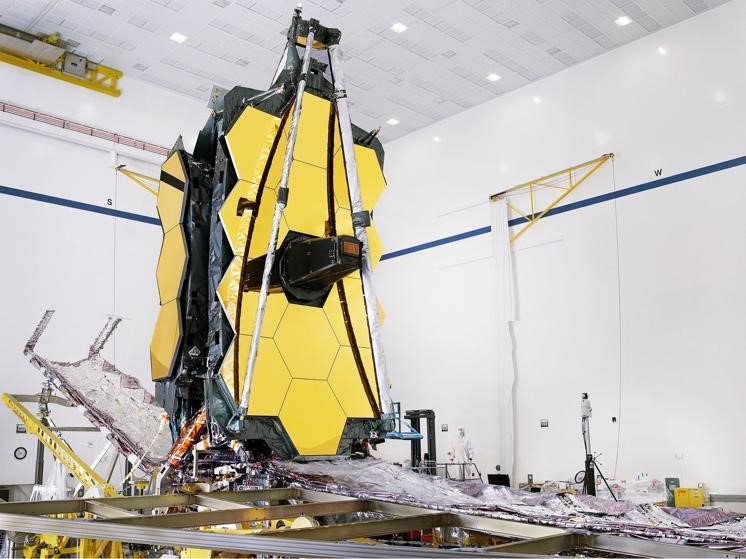
(Image credit: https://www.nasa.gov/feat必利勁 ure/goddard/2019/nasa-s-james-webb-space-telescope-has-been-assembled-for-the-first-time/)
-Youhan Wanigasuriya-
References:
[1] Wisconsin 101: Yerkes Telescope and the birthplace of Astrophysics. (2019, February 18). Retrieved October 10, 2021, from https://wisconsinlife.org/story/wisconsin-101-yerkes
[2] The Galileo Project: Science: Telescope. Retrieved October 10, 2021, from http://galileo.rice.edu/sci/instruments/telescope.html
[3] The origins of the telescope. Retrieved October 10, 2021, from https://books.google.lk/books?id=XguxYlYd9EC&pg=PA25&redir_esc=y#v=onepage&q&f=false
[4] Science. (2009). Spitzer Telescope Article, Infrared Observatory Information, Cosmic Facts — National Geographic. [online] Available at: https://www.nationalgeographic.com/science/article/spitzer-space-telescope [Accessed 11 Oct. 2021].
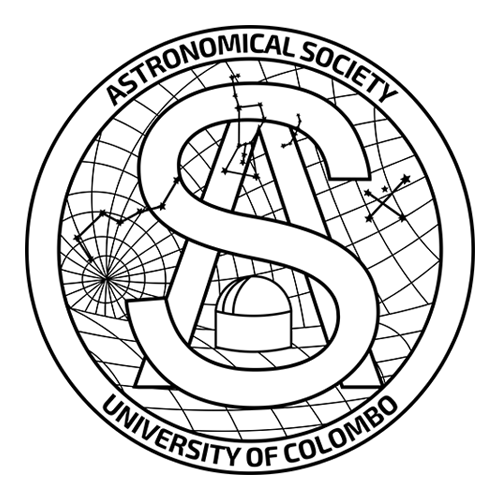

Very nice post. I just stumbled upon your weblog and wanted to say that I have truly
loved surfing around your weblog posts. After all I
will be subscribing to your feed and I am hoping you write
again soon!
whoah this blog is magnificent i love reading your articles.
Stay up the good work! You understand, lots of persons are looking round
for this info, you could help them greatly.